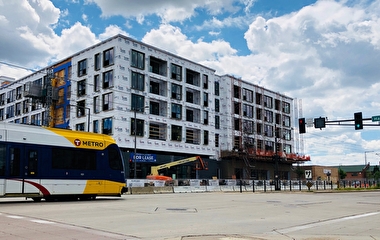Following Ralf-Peter Schäfer’s conference presentation, a panel of local experts shared their perspectives on how data might solve challenges and shape the future of transportation in Minnesota.
What considerations and challenges does the Twin Cities road network face?
“The reality for us is that we only have so much square footage within our right-of-way, and when we’re planning for the future we need to integrate all the different modes—cars, pedestrians, transit, and bicycles—and push them through this limited square footage,” said Debra Brisk, Hennepin County’s assistant county administrator of public works. “Our challenge is how to balance the demands and needs for that precious square footage to keep up with economic competitiveness and individuals’ changing mode choice—their growing preference to choose transit, walk, or bike.”
How can data help maximize the efficiency of the road system when adding lane miles is not an option for certain areas?
“By using data to gain a better understanding of where origins and destinations are and where people are ultimately going in a complex interchange, there may be some things we can do to make improvements,” said Brian Kary, MnDOT’s Metro District freeway operations engineer. “We have a lot of data that shows how many cars enter at one ramp and exit at another ramp, but we don’t really know the exact travel patterns within that interchange. Probe data can help us determine what the actual travel patterns are, and that could help with making designs more efficient to assist with some of those traffic changes without having to add more lanes.”
What data obstacles has the U of M’s Accessibility Observatory had to overcome in the development of national accessibility performance measures?
“Data is a really big part of our work measuring access to destinations throughout the entire country. We need really detailed information about the structure of our road network and the speeds people are able to travel at different times of day, as well as very specific information about our transit systems, pedestrian networks, and bicycle networks,” said Andrew Owen, director of the Accessibility Observatory. “The key for us in taking a national look at accessibility is that we need this data in a consistent way, so what makes our work possible is overcoming data fragmentation and looking at sources of data that are consistent across the whole country.”



